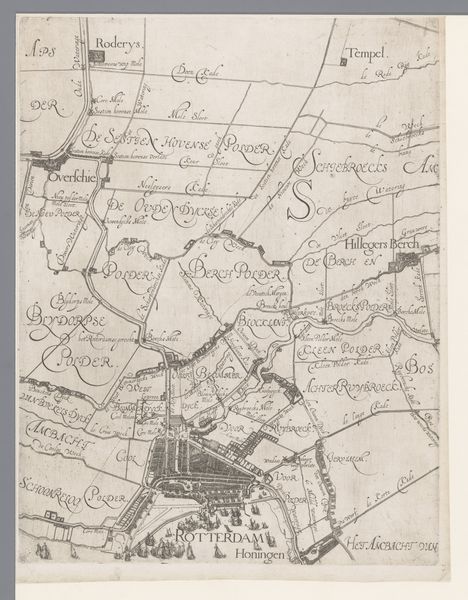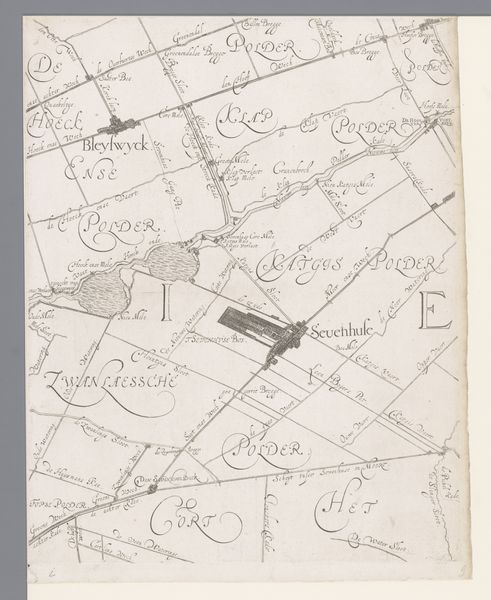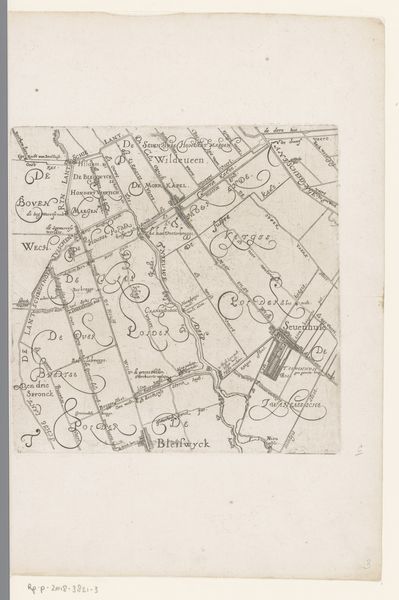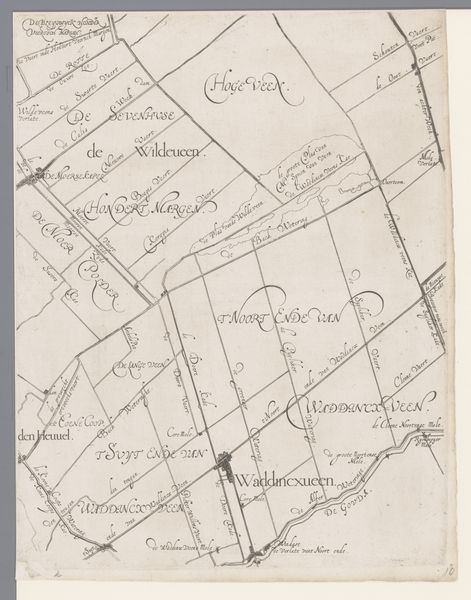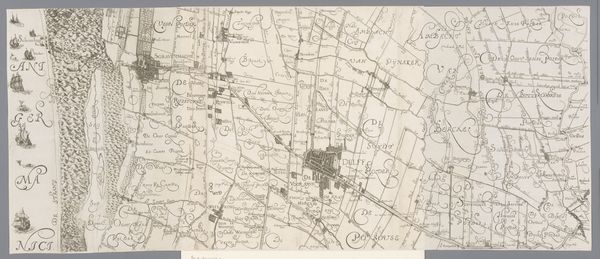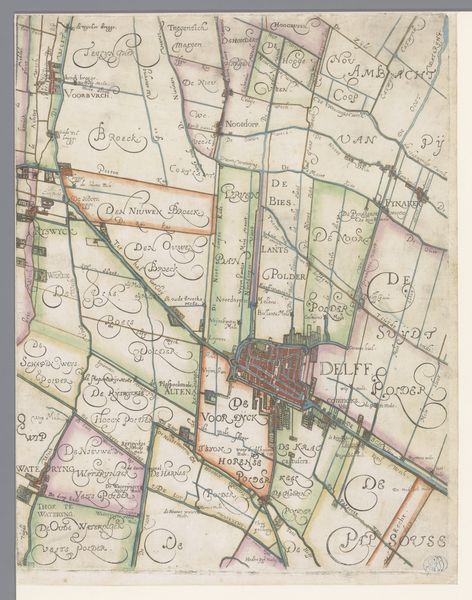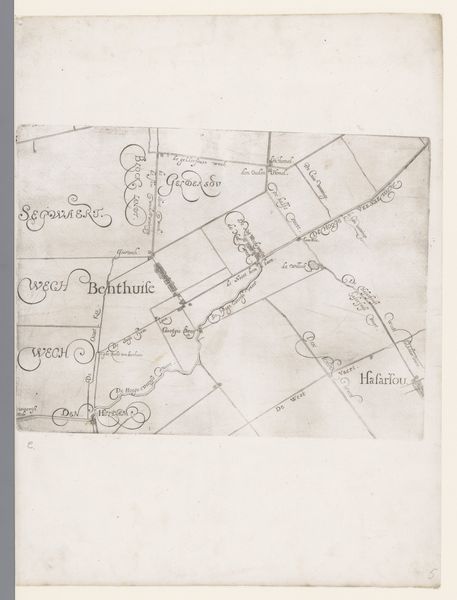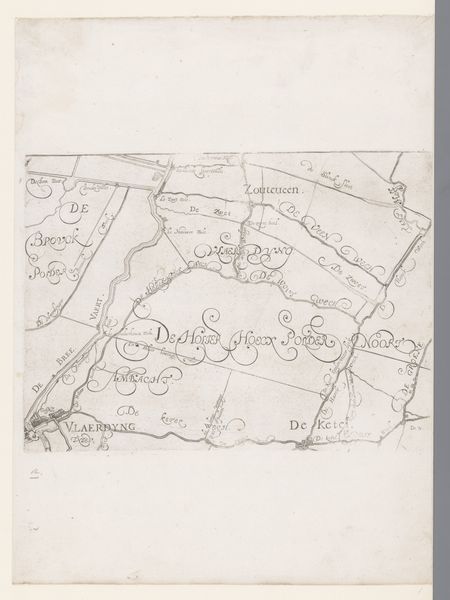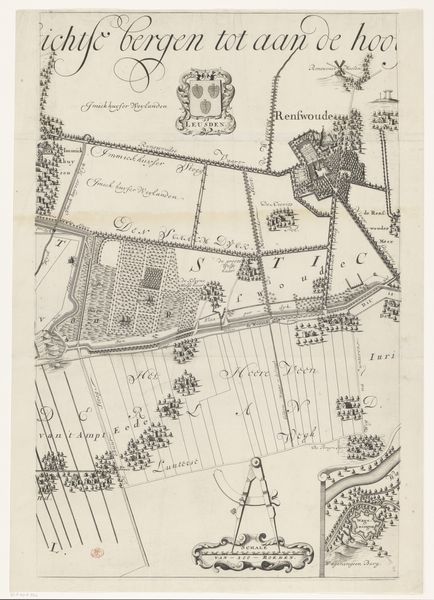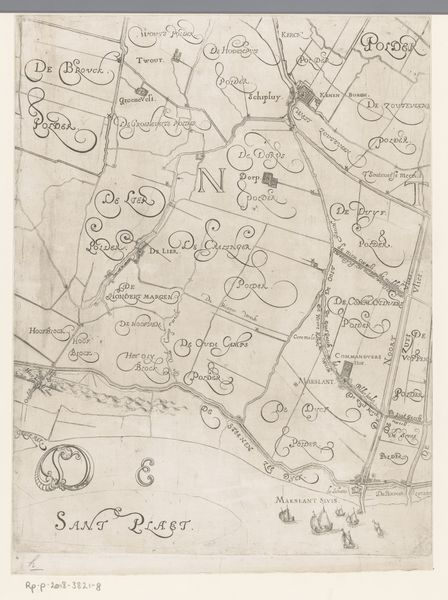
Kaart van het Hoogheemraadschap van Delfland, met Delft en omgeving, middelste deel 1611 - 1692
0:00
0:00
florisbalthasarszvanberckenrode
Rijksmuseum
drawing, print, etching, paper, ink
#
drawing
#
dutch-golden-age
# print
#
etching
#
landscape
#
paper
#
ink
#
cityscape
Dimensions: height 384 mm, width 298 mm
Copyright: Rijks Museum: Open Domain
Curator: This exquisitely detailed map, "Kaart van het Hoogheemraadschap van Delfland, met Delft en omgeving, middelste deel," by Floris Balthasarsz van Berckenrode, invites close inspection. Dating from 1611 to 1692, it's a stunning example of early cartography using ink, etching, and print on paper. Editor: It feels more like a drawing than a functional map, doesn't it? The swirling calligraphy describing each parcel, the overall composition...it has a strangely dreamlike quality despite its objective purpose. Curator: Indeed. Notice how the varying line weights and intricate detailing create depth, distinguishing between built environments and open fields. Semiotically, the map communicates both concrete geographical data and the more abstract idea of land ownership and governance. Editor: I am immediately drawn to the materiality of it. Consider the time and labor invested. Every stroke etched into the printing plate represents human effort and specialized knowledge. It forces one to think about the societal implications – who had access to these materials, these skills? How were these resources extracted and distributed? The means of production itself seems key to understand the culture. Curator: Precisely. The controlled perspective and measured accuracy reveal a scientific gaze, reflecting the Dutch Golden Age’s focus on empirical observation. The structural arrangement emphasizes clarity, allowing viewers to navigate the spatial relations of the Delfland region. The ordering principle transcends mere geography. Editor: For me, it transcends utility. You almost forget its a map when observing the texture and impression left on the paper – each element reminding of the tangible work needed. Look how place names curl whimsically around landscapes, elevating it above the merely informational. It speaks volumes about status and consumption. Curator: Well articulated! Considering these layered contexts only enhances the viewer's interpretation. Editor: Exactly! Appreciating how art connects to labour is part of art.
Comments
No comments
Be the first to comment and join the conversation on the ultimate creative platform.

